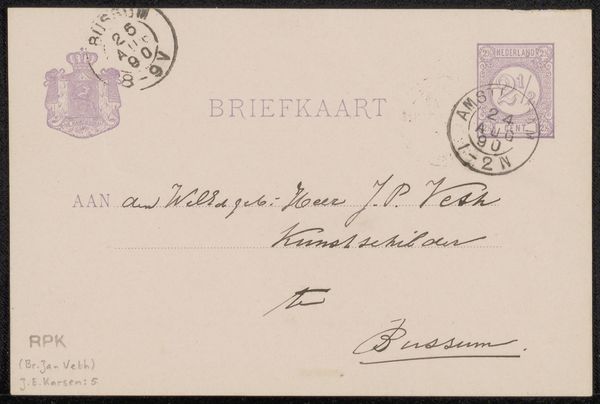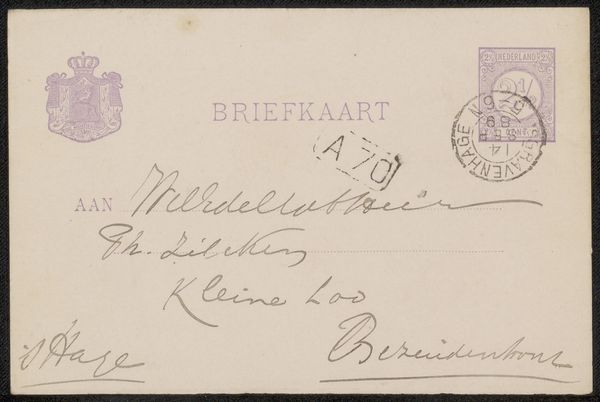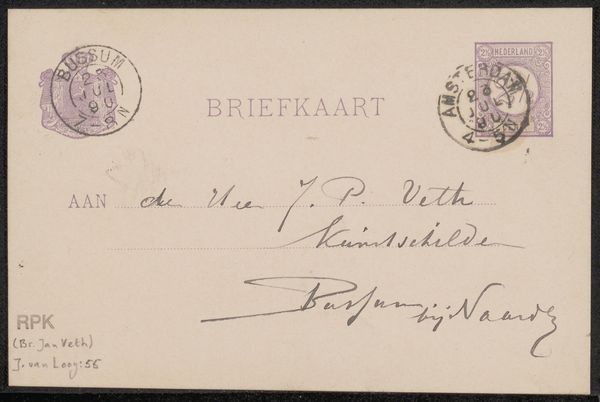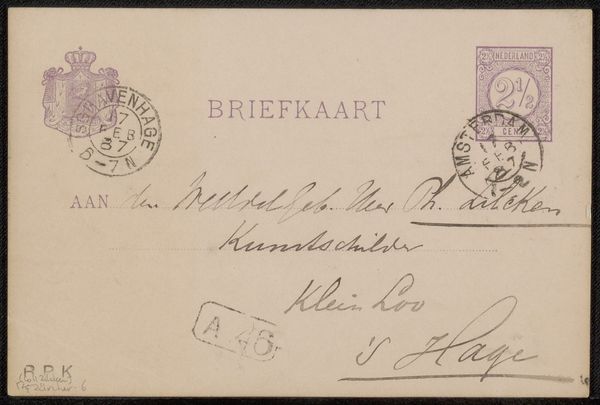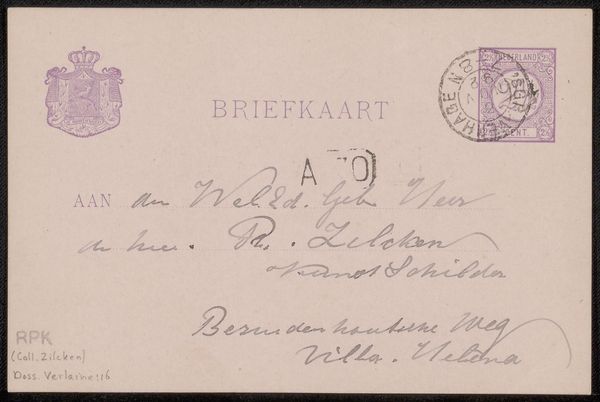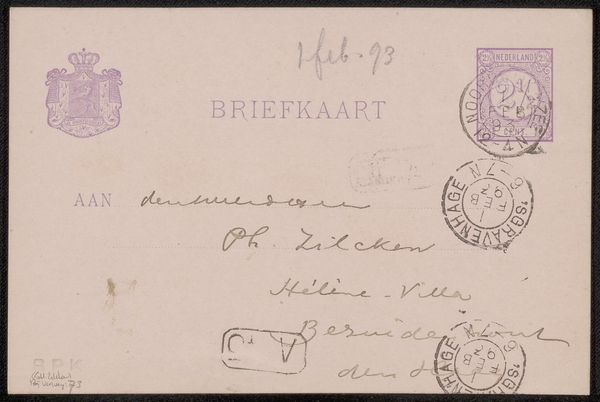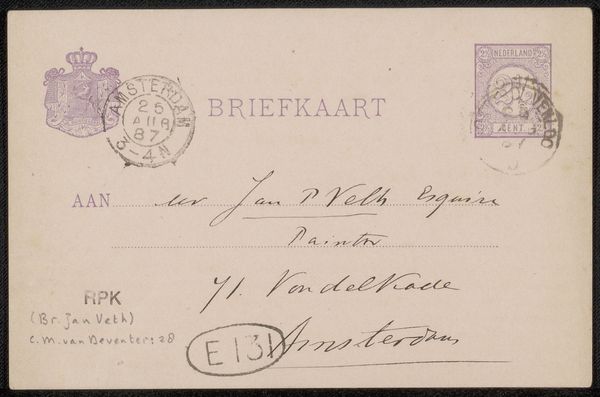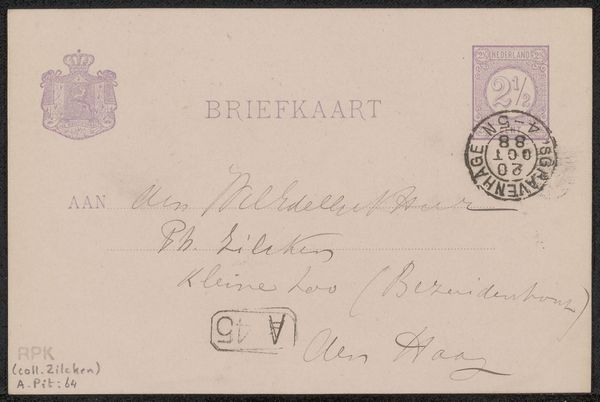
drawing, paper, ink, pen
#
drawing
#
pen sketch
#
paper
#
ink
#
pen
Copyright: Rijks Museum: Open Domain
Editor: So, here we have Jan Zürcher's "Briefkaart aan Philip Zilcken," possibly from 1888, created with pen and ink on paper. It’s a simple postcard, but seeing handwriting like this makes it feel really personal and immediate. What do you see in a seemingly mundane item like this? Curator: What I immediately recognize are the vestiges of empire embedded within everyday communication. Consider the postal seals: each carefully placed stamp and emblem – what stories do they silently broadcast? A crowned crest asserts power and authority, while the circular stamps marking place and time weave a subtle narrative of connection. Editor: So, the stamps aren't just administrative; they are also symbolic? Curator: Precisely. Think about the handwritten script itself. Handwriting, a lost art now, speaks volumes about the sender's personality, their level of formality, and their relationship to the recipient. These physical marks become symbolic of connection and shared experience, turning a simple message into something far more intimate. Why do you think the artist chose this medium of a brief note instead of another method? Editor: Maybe it was simply practicality? Or a sense of urgency? I hadn't considered the deeper implications of the postal seals though. Curator: Think about how the journey of this postcard might echo journeys between people and places – a migration of ideas and affections encapsulated on a small piece of paper. This "briefkaart" embodies fragments of memory itself. Editor: This makes me rethink the value we place on digital communication today versus something tangible and hand-written from the past. Thanks! Curator: Absolutely. By decoding these commonplace symbols we are able to unlock cultural memory that speaks across time.
Comments
No comments
Be the first to comment and join the conversation on the ultimate creative platform.


